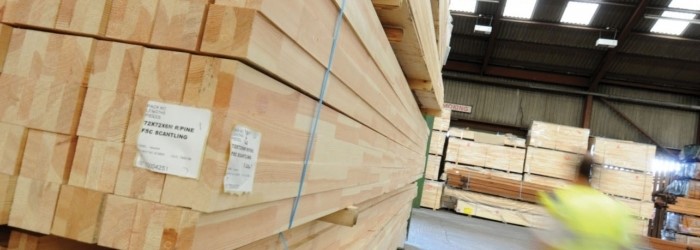Laminated Timber; What’s Best for You?
Laminated timber is continuing its meteoric rise in the building trade, being used more and more as an alternative to steel and concrete. It’s lighter, handles fire differently, can be pre-fabricated to any dimension, and looks much more natural and warming than steel or concrete.
We’ve already written blogs on how much we love Cross Laminated Timber (CLT) and the safety features of wood over steel and concrete. This guide aims to outline the different types of laminated timber and the strengths and weaknesses of each. If you’re thinking of using laminated timber in your next project, take in the options below and make an informed decision.
Cross Laminated Timber
We’re big fans of Cross Laminated Timber (CLT) here at International Timber, it’s strong, versatile and light weight, making it one of the perfect options for almost any job.
First introduced in the 1990s CLT is produced by layering multiple timber sections of wood at right angles, which are then glued and pressed together. This greatly improves the strength of the product whilst still keeping the flexibility of the original timber.
It can be prefabricated in a factory to any shape or dimension and is much lighter than its steel and concrete counterparts. As the manufacturing process is scalable and more streamlined, the manufacturing timeline is much shorter than that of steel and concrete, making it perfect for large construction projects.
CLT continues to go from strength to strength and has gained foothold in both the residential and non-residential construction sectors. In Europe alone there are over 150 CLT projects either already finished or in development, including the world’s tallest timber tower.
Whilst the advantages of CLT are numerous, there are some things to consider before committing to using it in your next project. As CLT is a relatively new addition to the UK building industry, its costs and associated energy in delivering it can be quite high. As it becomes more widely adopted, these should come down.
CLT can also be more difficult to modify after installation. Careful consideration should be given to the placement of services before fitting.
Glued Laminated Timber (GLULAM)
Glued Laminated Timber (or Glulam), at basic level is made by gluing lengths of timber together in order to make bigger pieces. By doing this, manufacturers are able to create elements, shapes and lengths that would not be easily sourced in solid would due to large size or unusual shape.
Glulam is one of the most widely used timber products, especially in more commercial projects such as swimming pools and sports halls. There are projects in the UK dating back more than 170 that have used Glulam.
Nowadays Glulam uses a waterproof synthetic resin to bond the lengths together, ensuring consistency and water resistance.
Glulam not only can be moulded to curves, it also highly fire retardant by nature and has a strength to weight ratio of 1.5-2 times that of steel.
Glulam can be the solutions to a whole host of issues, most notably providing load bearing beams over vast expanses. It can be more adaptable than steel in this respect as it can by manufactured off site at a considerably faster pace.
Although steel is marginally cheaper than Glulam it also takes longer fit and there is now room for error. Glulam offers a locally sourced, environmentally friendly (if you choose to use a green adhesive) alternative to traditional steel beams.
You can find out more about the uses of at the Glued Laminated Timber Association website.
If you’re looking to use a laminated timber product in your next project, or would just like some more advice on which laminated timber product is for you, do get in contact on Facebook or Twitter.


